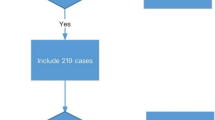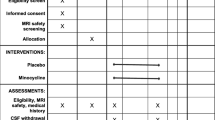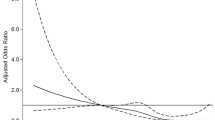Abstract
Cerebral amyloid angiopathy (CAA) is a common degenerative disease presenting intracerebral hemorrhage (ICH) in older people. Uric acid (UA) is a natural antioxidant, and may have a beneficial role in neurodegenerative diseases. Nevertheless, the role of UA in CAA remains unknown. In the present study, we compared serum UA levels in CAA-associated ICH patients (n = 82) and age/sex-matched controls (n = 82). Serum UA levels in possible CAA were significantly decreased when compared with healthy controls (232.68 ± 77.70 vs. 309.42 ± 59.83 μmol/L; p < 0.001). Furthermore, UA levels in patients clinically diagnosed as probable CAA were significantly lower than those in patients diagnosed as possible CAA (193.06 ± 56.98 vs. 232.68 ± 77.70 μmol/L; p = 0.014). These differences were still significant after adjusting for renal function and dyslipidemia (p < 0.001 and p = 0.002, respectively). However, there were no associations between serum UA levels and the distribution of hemorrhagic lesion, as well as neurological impairment. Our observations indicate that serum UA levels were decreased in CAA patients. UA might play a neuroprotective role in CAA and serve as a potential biomarker for reflecting the severity of Aβ deposition.

Similar content being viewed by others
References
Charidimou A, Gang Q, Werring DJ (2012) Sporadic cerebral amyloid angiopathy revisited: recent insights into pathophysiology and clinical spectrum. J Neurol Neurosurg Psychiatry 83:124–137
Carrano A, Hoozemans JJ, van der Vies SM, Rozemuller AJ, van Horssen J, de Vries HE (2011) Amyloid Beta induces oxidative stress-mediated blood-brain barrier changes in capillary amyloid angiopathy. Antioxid Redox Signal 15:1167–1178
Coma M, Guix FX, Ill-Raga G, Uribesalgo I, Alameda F, Valverde MA, Muñoz FJ (2008) Oxidative stress triggers the amyloidogenic pathway in human vascular smooth muscle cells. Neurobiol Aging 29:969–980
Whiteman M, Ketsawatsakul U, Halliwell B (2002) A reassessment of the peroxynitrite scavenging activity of uric acid. Ann N Y Acad Sci 962:242–259
Guerrero AL, Gutiérrez F, Iglesias F, Martín-Polo J, Merino S, Martín-Serradilla JI, Laherrán E, Tejero MA (2011) Serum uric acid levels in multiple sclerosis patients inversely correlate with disability. Neurol Sci 32:347–350
Annanmaki T, Muuronen A, Murros K (2007) Low serum uric acid level in Parkinson’s disease. Mov Disord 22:1133–1137
Cao B, Guo X, Chen K, Song W, Huang R, Wei QQ, Zhao B, Shang HF (2013) Uric acid is associated with the prevalence but not disease progression of multiple system atrophy in Chinese population. J Neurol. doi:10.1007/s00415-013-7006-z
Paganoni S, Zhang M, Quiroz Zárate A, Jaffa M, Yu H, Cudkowicz ME, Wills AM (2012) Uric acid levels predict survival in men with amyotrophic lateral sclerosis. J Neurol 259:1923–1928
Auinger P, Kieburtz K, McDermott MP (2010) The relationship between uric acid levels and Huntington’s disease progression. Mov Disord 25:224–228
Bowman GL, Shannon J, Frei B, Kaye JA, Quinn JF (2012) Uric acid as a CNS antioxidant. J Alzheimers Dis 19:1331–1336
Pezzini A, Padovani A (2008) Cerebral amyloid angiopathy-related hemorrhages. Neurol Sci Suppl 2:S260–S263
Knudsen KA, Rosand J, Karluk D, Greenberg SM (2001) Clinical diagnosis of cerebral amyloid angiopathy: validation of the Boston criteria. Neurology 56:537–539
Perry G, Smith MA, McCann CE, Siedlak SL, Jones PK, Friedland RP (1998) Cerebrovascular muscle atrophy is a feature of Alzheimer’s disease. Brain Res 791:63–66
Miranda S, Opazo C, Larrondo LF, Muñoz FJ, Ruiz F, Leighton F, Inestrosa NC (2000) The role of oxidative stress in the toxicity induced by amyloid beta-peptide in Alzheimer’s disease. Prog Neurobiol 62:633–648
Yan SD, Chen X, Fu J, Chen M, Zhu H, Roher A, Slattery T, Zhao L, Nagashima M, Morser J, Migheli A, Nawroth P, Stern D, Schmidt AM (1996) RAGE and amyloid-beta peptide neurotoxicity in Alzheimer’s disease. Nature 382:685–691
Busciglio J, Yankner BA (1995) Apoptosis and increased generation of reactive oxygen species in Down’s syndrome neurons in vitro. Nature 378:776–779
Lum H, Roebuck KA (2001) Oxidant stress and endothelial cell dysfunction. Am J Physiol Cell Physiol 280:C719–C741
Siegel SJ, Bieschke J, Powers ET, Kelly JW (2007) The oxidative stress metabolite 4-hydroxynonenal promotes Alzheimer protofibril formation. Biochemistry 46:1503–1510
Melov S, Adlard PA, Morten K, Johnson F, Golden TR, Hinerfeld D, Schilling B, Mavros C, Masters CL, Volitakis I, Li QX, Laughton K, Hubbard A, Cherny RA, Gibson B, Bush AI (2007) Mitochondrial oxidative stress causes hyperphosphorylation of tau. PLoS ONE 2:e536
Ames BN, Cathcart R, Schwiers E, Hochstein P (1981) Uric acid provides an antioxidant defense in humans against oxidant- and radical-caused aging and cancer: a hypothesis. Proc Natl Acad Sci USA 78:6858–68562
Davies KJ, Sevanian A, Muakkassah-Kelly SF, Hochstein P (1986) Uric acid-iron ion complexes. A new aspect of the antioxidant functions of uric acid. Biochem J 235:747–754
Behl C, Davis J, Cole GM, Schubert D (1992) Vitamin E protects nerve cells from amyloid beta protein toxicity. Biochem Biophys Res Commun 186:944–950
Pappolla MA, Sos M, Omar RA, Bick RJ, Hickson-Bick DL, Reiter RJ, Efthimiopoulos S, Robakis NK (1997) Melatonin prevents death of neuroblastoma cells exposed to the Alzheimer amyloid peptide. J Neurosci 17:1683–1690
Brouns R, Wauters A, Van De Vijver G, De Surgeloose D, Sheorajpanday R, De Deyn PP (2010) Decrease in uric acid in acute ischemic stroke correlates with stroke severity, evolution and outcome. Clin Chem Lab Med 48:383–390
Acknowledgments
This work was supported by a grant from National Natural Sciences Foundation of China (No. 81102689).
Conflict of interest
The authors state that they have no conflict of interest.
Author information
Authors and Affiliations
Corresponding author
Rights and permissions
About this article
Cite this article
Hu, Q., Liu, A., Huang, M. et al. Lower serum uric acid levels in cerebral amyloid angiopathy: a pilot study. Neurol Sci 35, 1035–1039 (2014). https://doi.org/10.1007/s10072-014-1634-7
Received:
Accepted:
Published:
Issue Date:
DOI: https://doi.org/10.1007/s10072-014-1634-7




